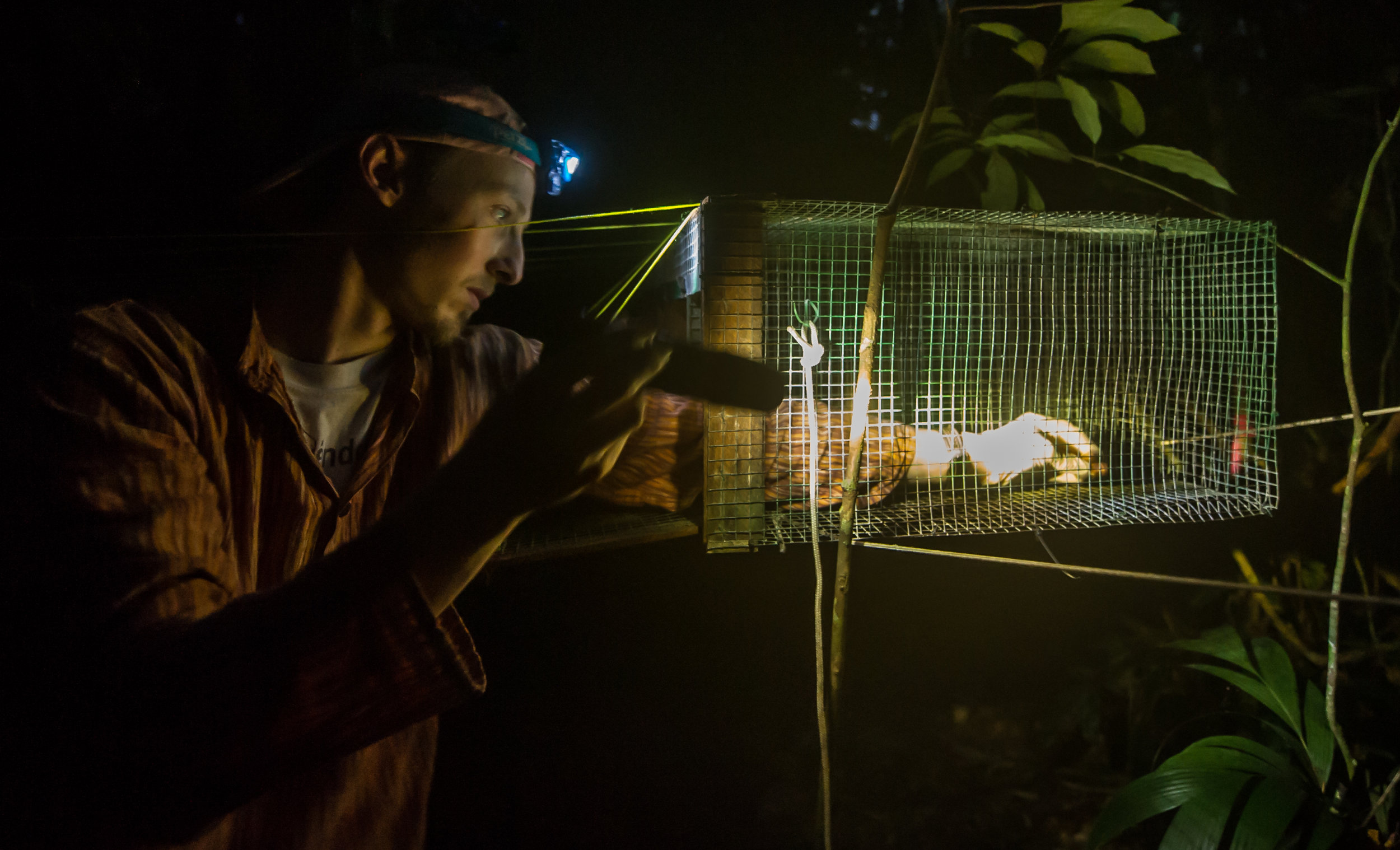
Part one of a five person team sets up the traps. The untimate goal is to capture the entire group so as not to disturb their social organisation. Bait is placed in each compartment of the trap, while each trap door is controlled manually.
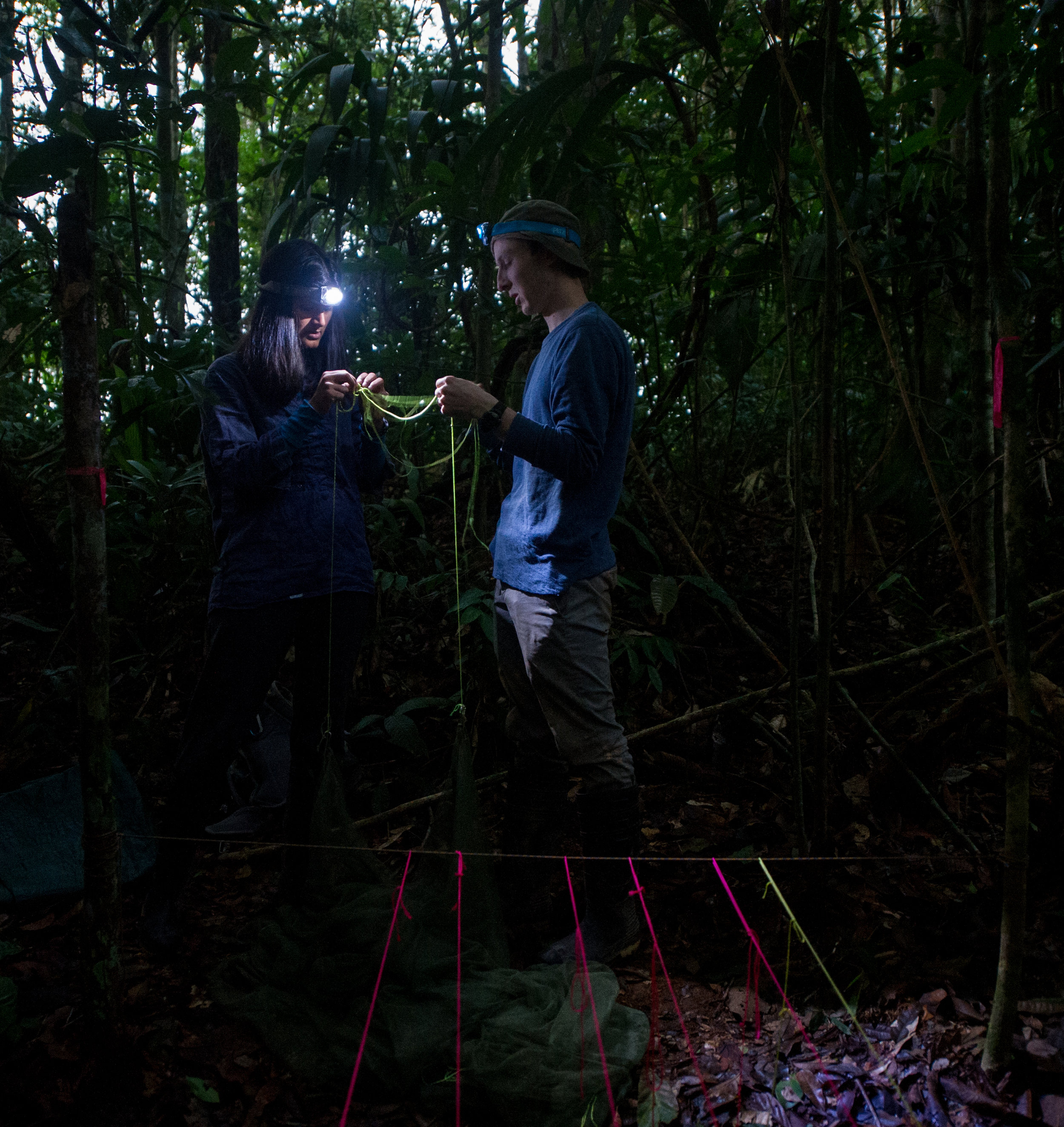
Bait is placed in each compartment of the trap, while each trap door is controlled manually.
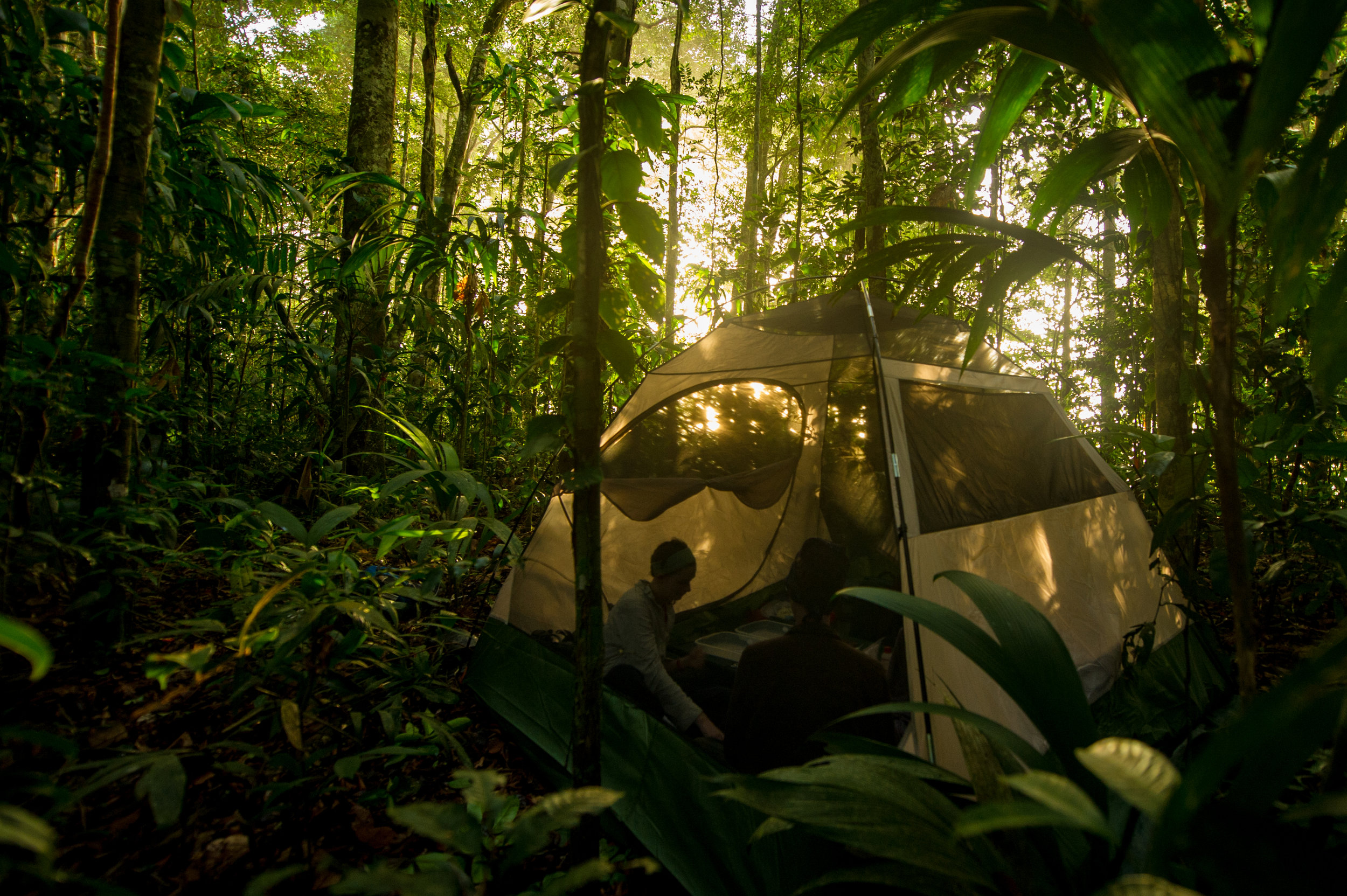
The second half of the team sets up a processing station in a modified tent. Inside, the instruments required for processing are sterilised and laid out on a foldable cot in a predefined manner.

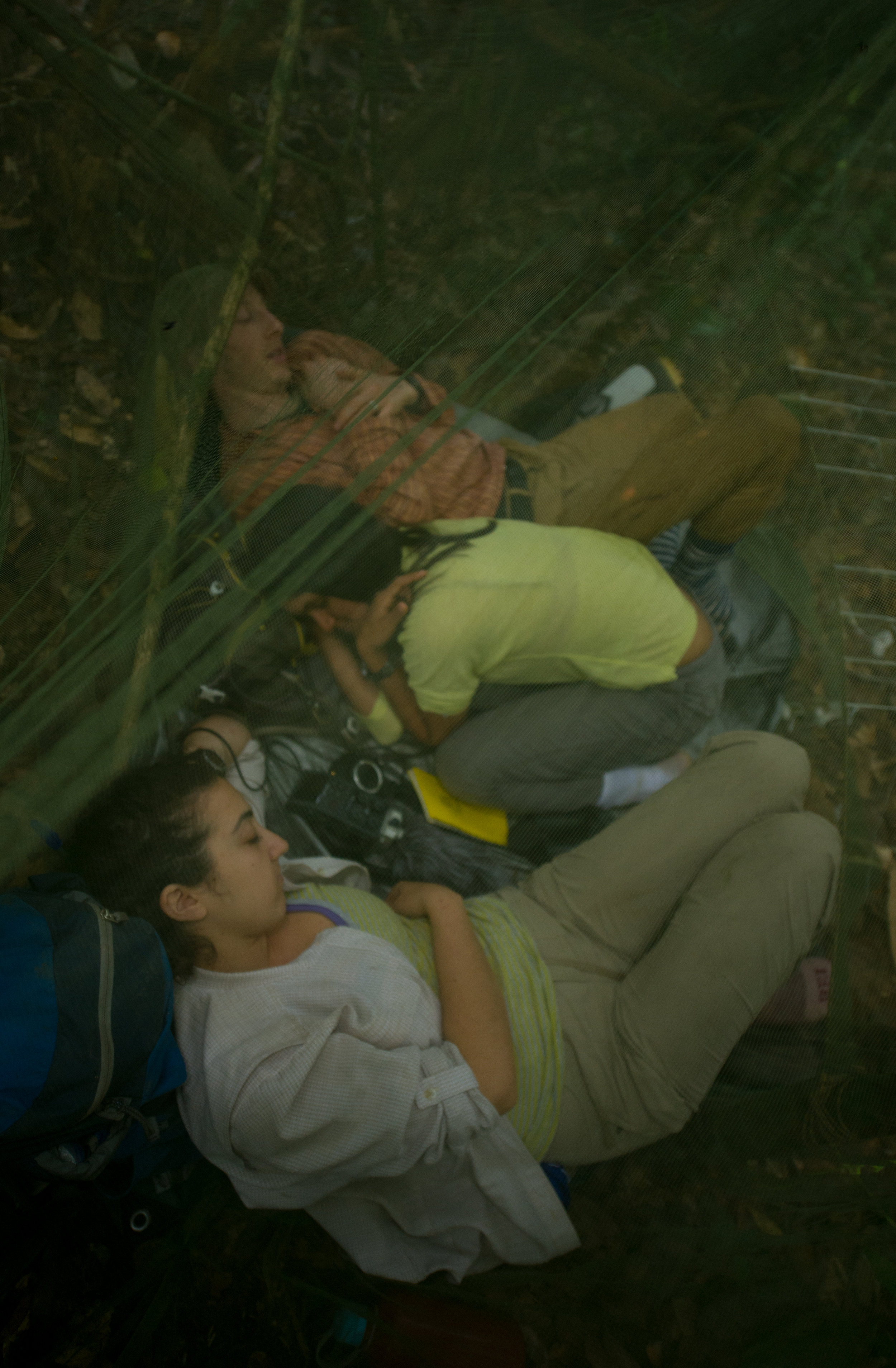
Patience is the most valueable asset one develoups. It also is a must to be able to wake up from a light slumber in cramped conditions at the slightest russle of leaves or tamarin tweet.

A few soft calls and some light jumps and one has to be ready to pull the strings. Here Efstathia Robakis (center) records tamarin vocalisations. Quietly, and without startling the primates, compartments are closed as the animals enter.

As soon as the group is inside, the trap is brought carefully to the ground. This is done in an effiecient and practised manner to reduce the stress on the animals. Covering the entire trap with a tarp calms the animals down immediately.
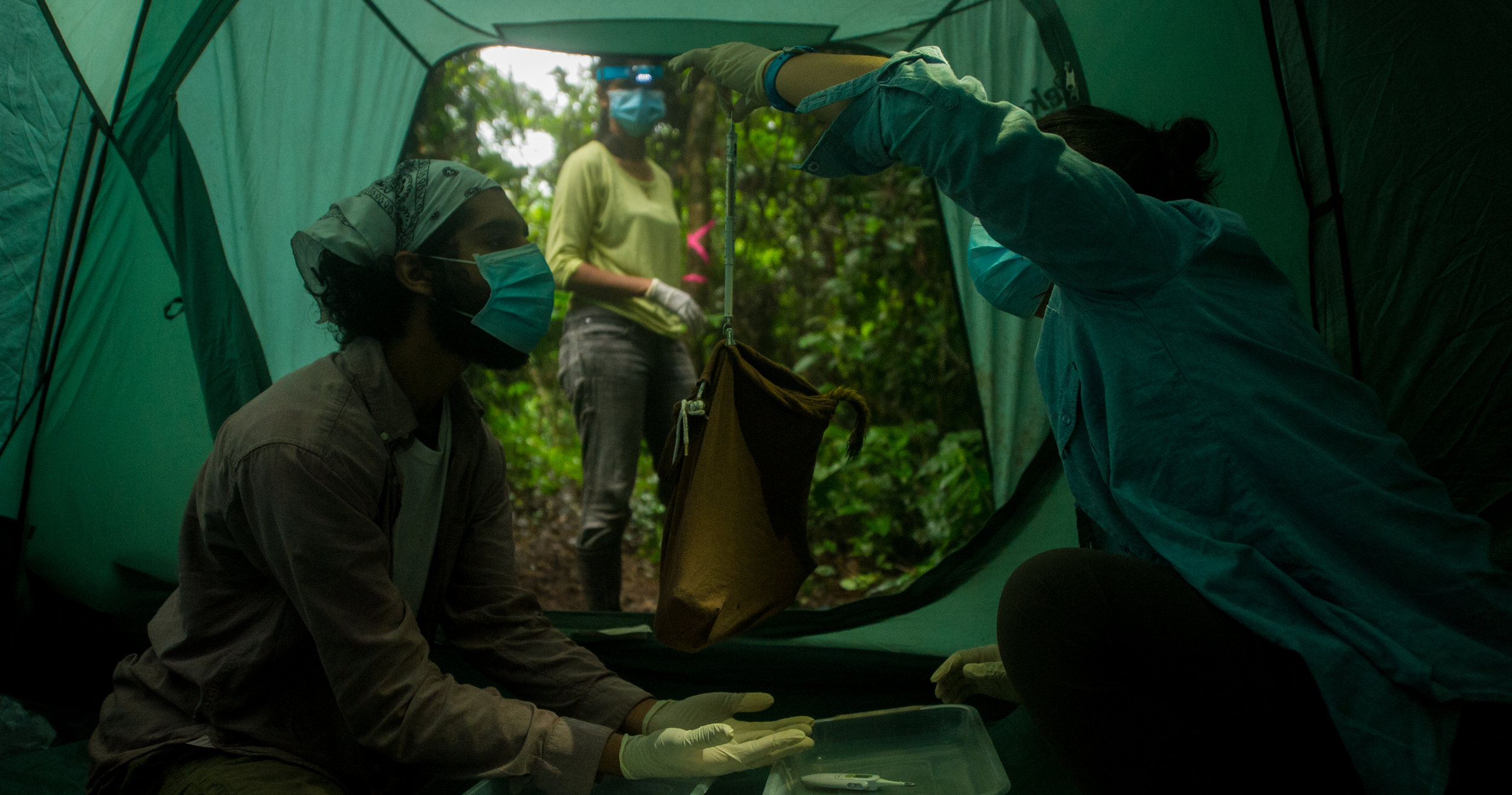
Small, controled doses of anaesthesia and the animals are moved to the processing tent where initial assesments are done.
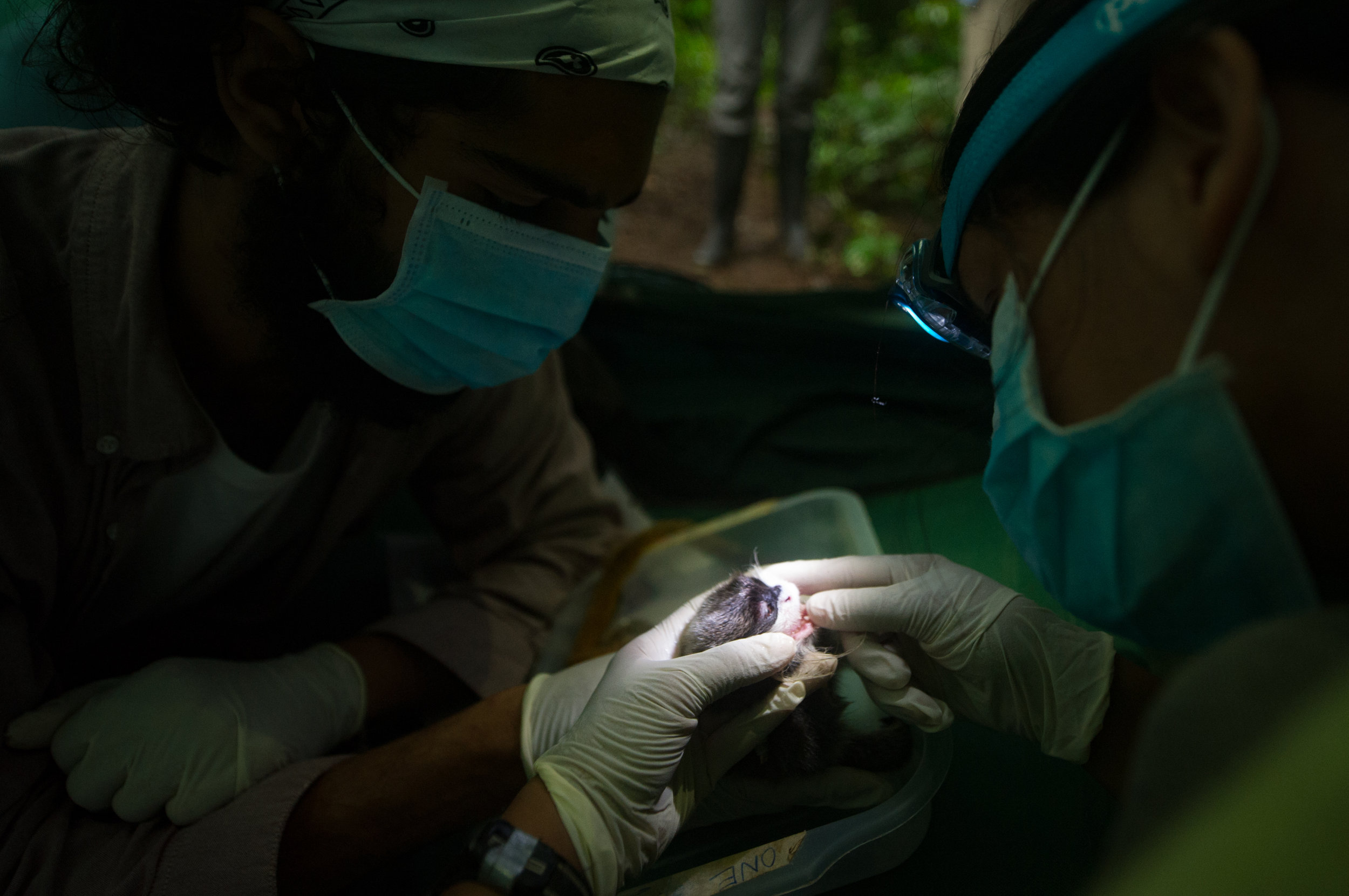
All team members are vaccinated and wear proper protective equipment (gloves, masks, etc) that are changed between animals to prevent any cross contamination. All data is timestamped and recorded on a voice recorder for later verification.
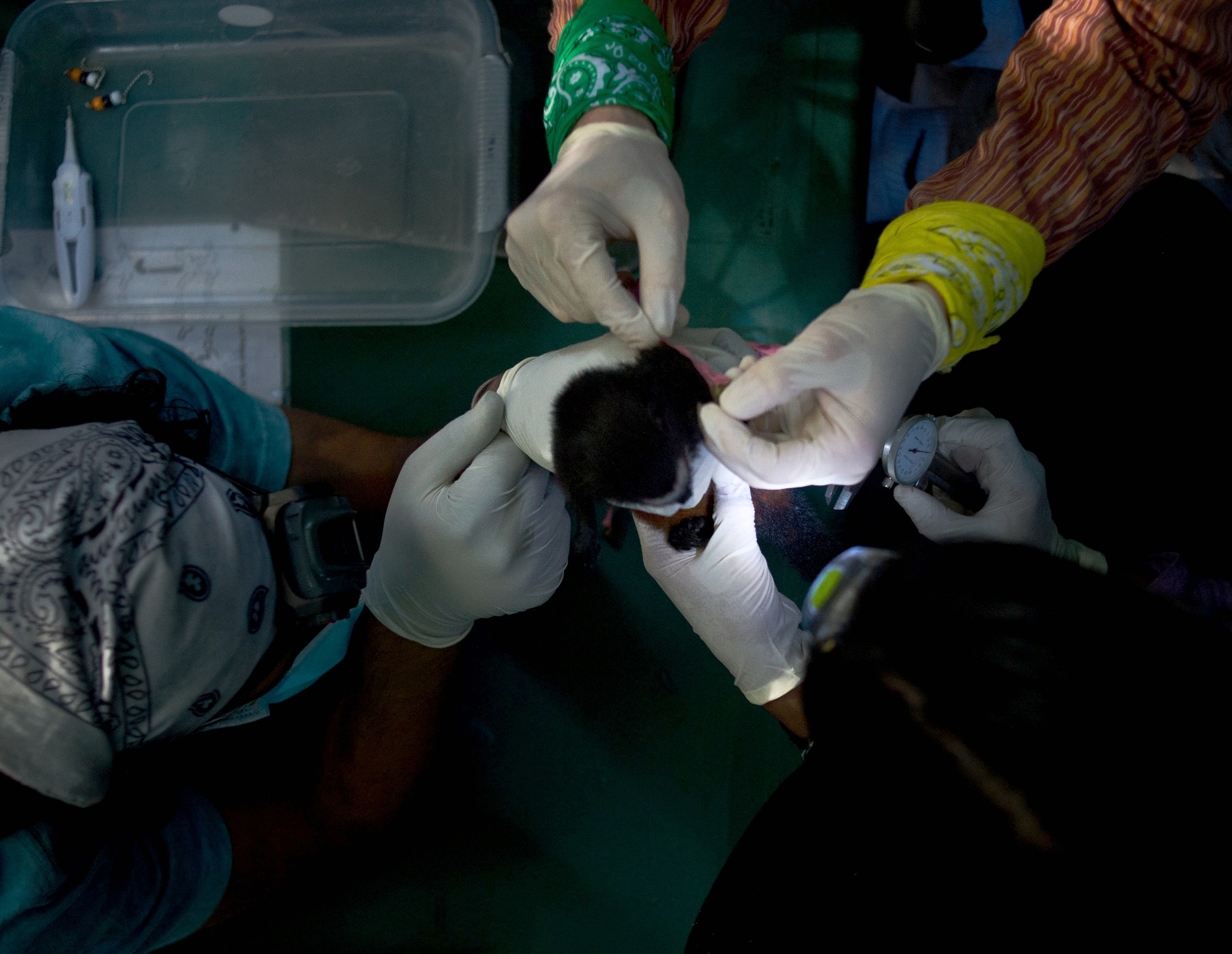
Once all animals are inside the tent, there is not a moment of free time. The bulk of the processing happens here. Photographs are taken to record teeth genitalia and scent glands. A comprehensive injuries check allowed for careful monitoring of health over time.
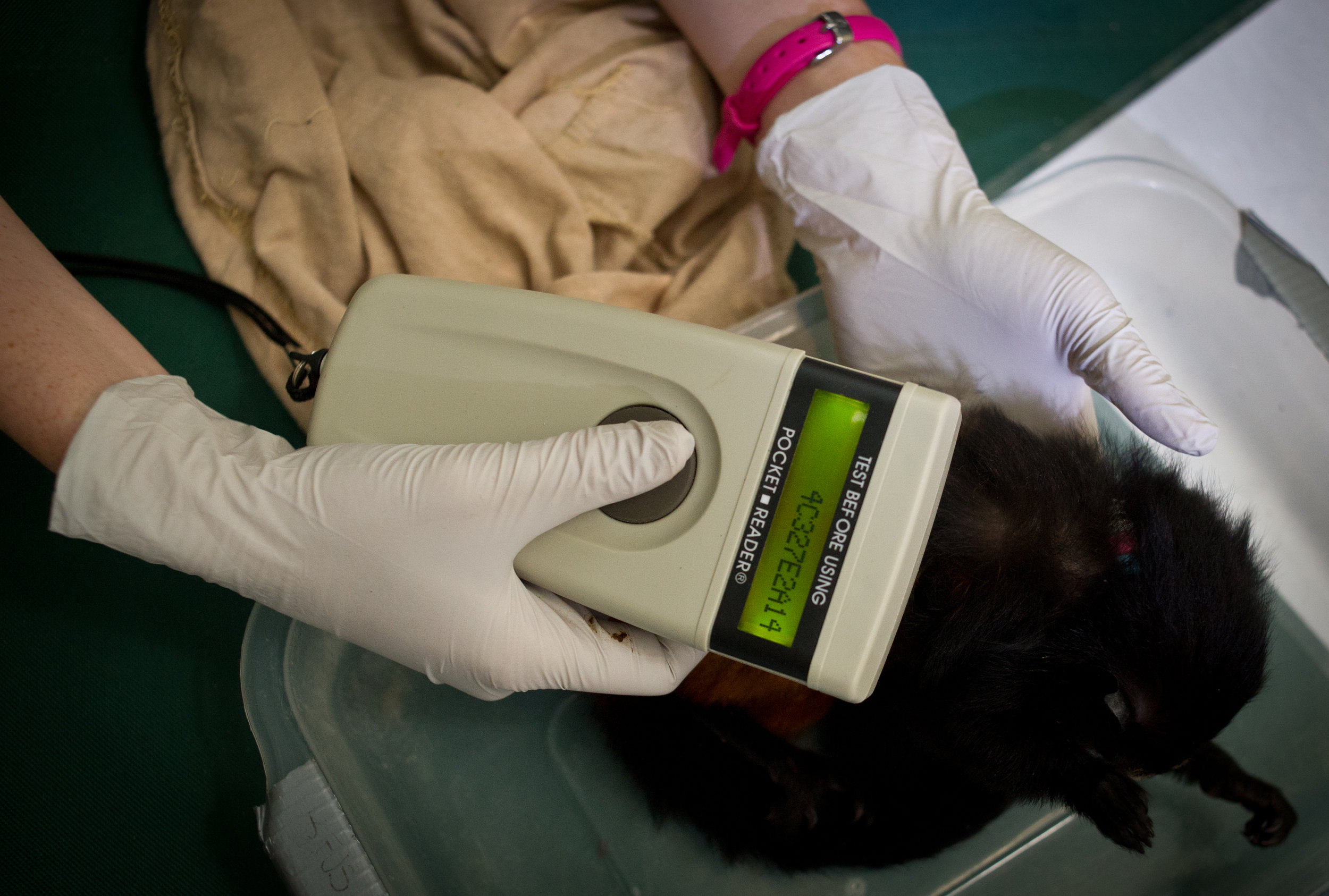
Every animal that passes through the prcessing tent is giving a microchip. This way individualls can be recognised even after all temporary forms of identification has vanished, apearnce is altered by age, or group membership changed through dispersal.

79 measurements are taken on both sides of the body.
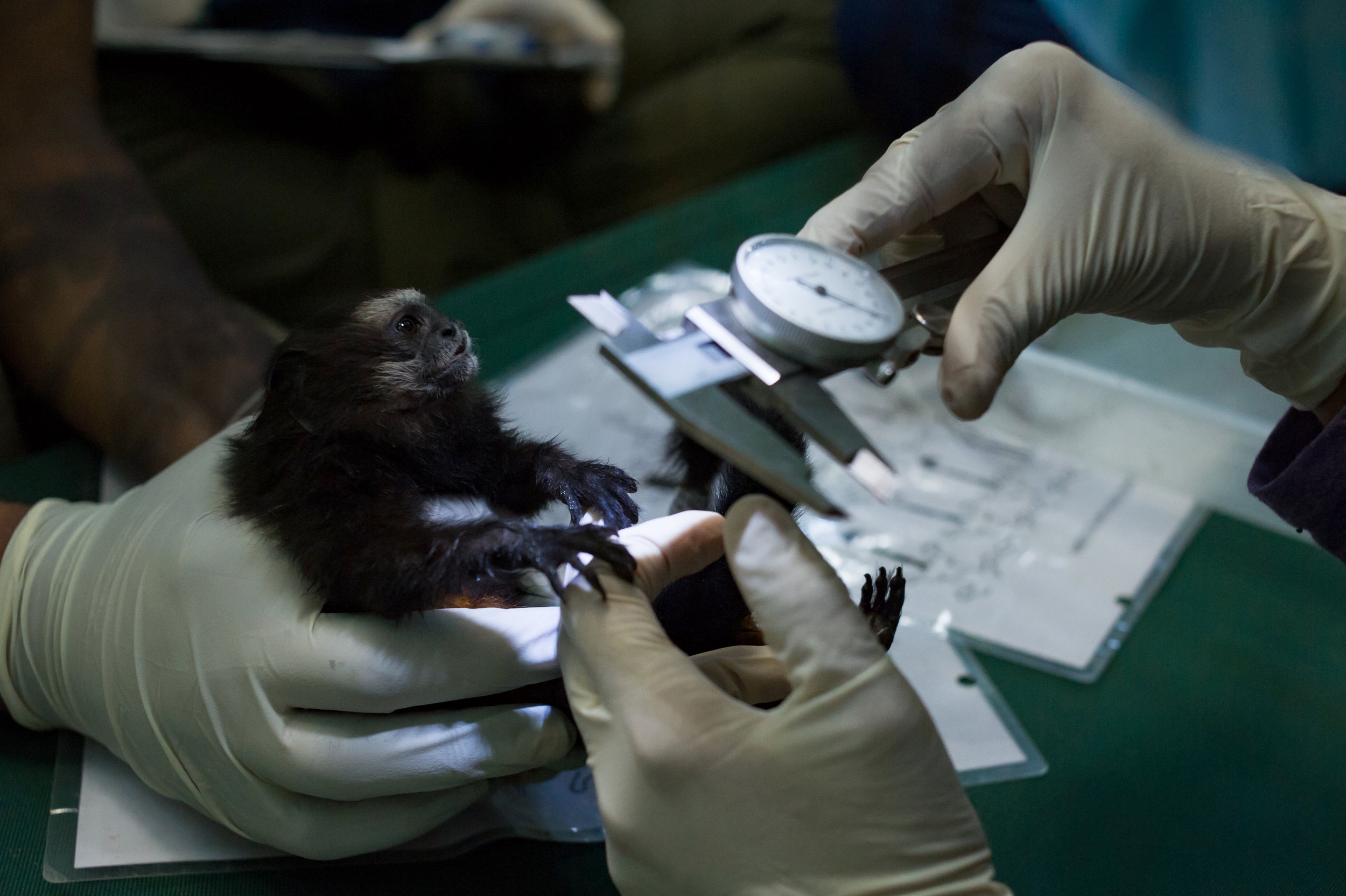
This is done last and only if the animal is compliant (as at this point the anaesthesia is wearing off).
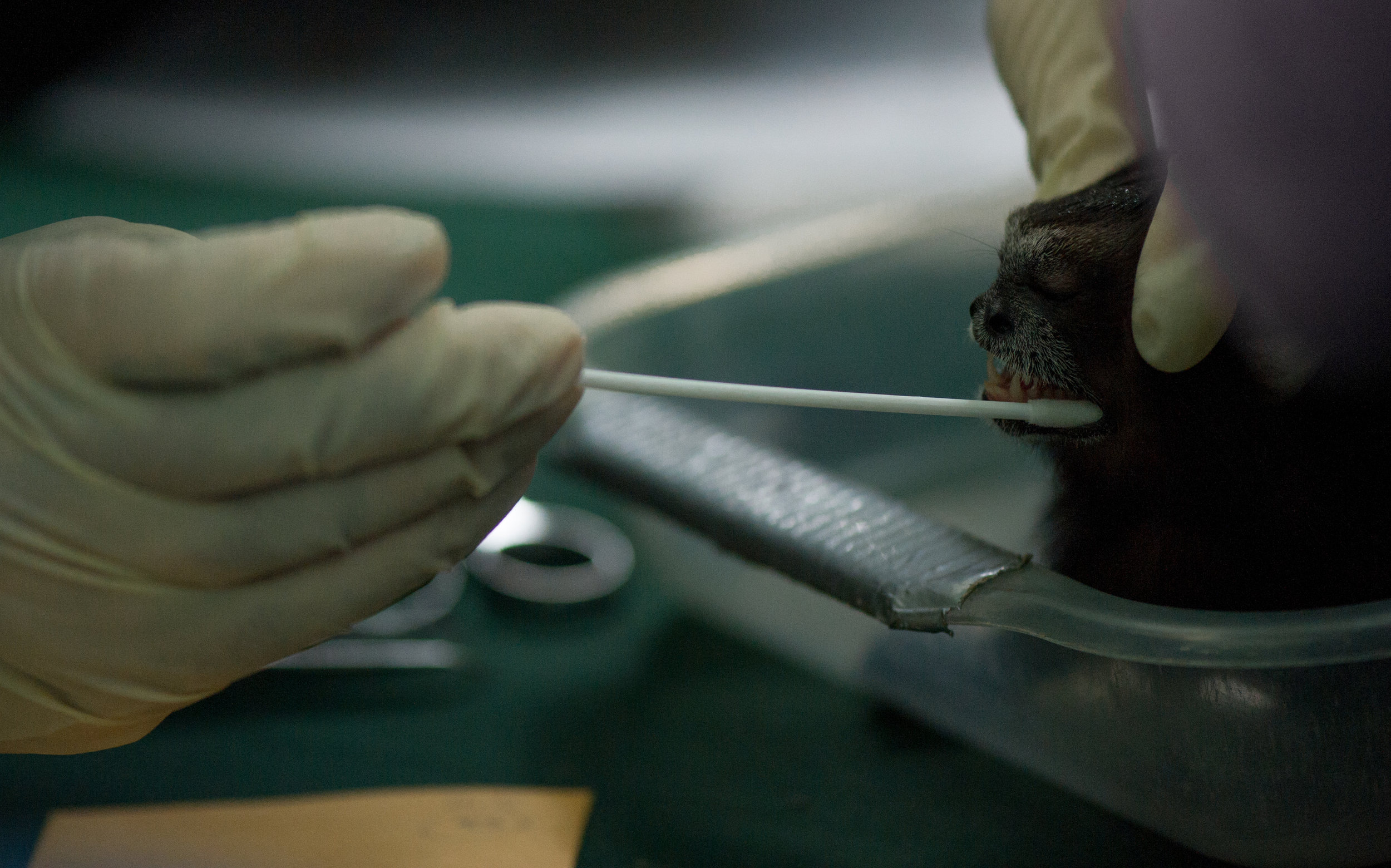
Buccal swab samples are sent to be analysed for disease.
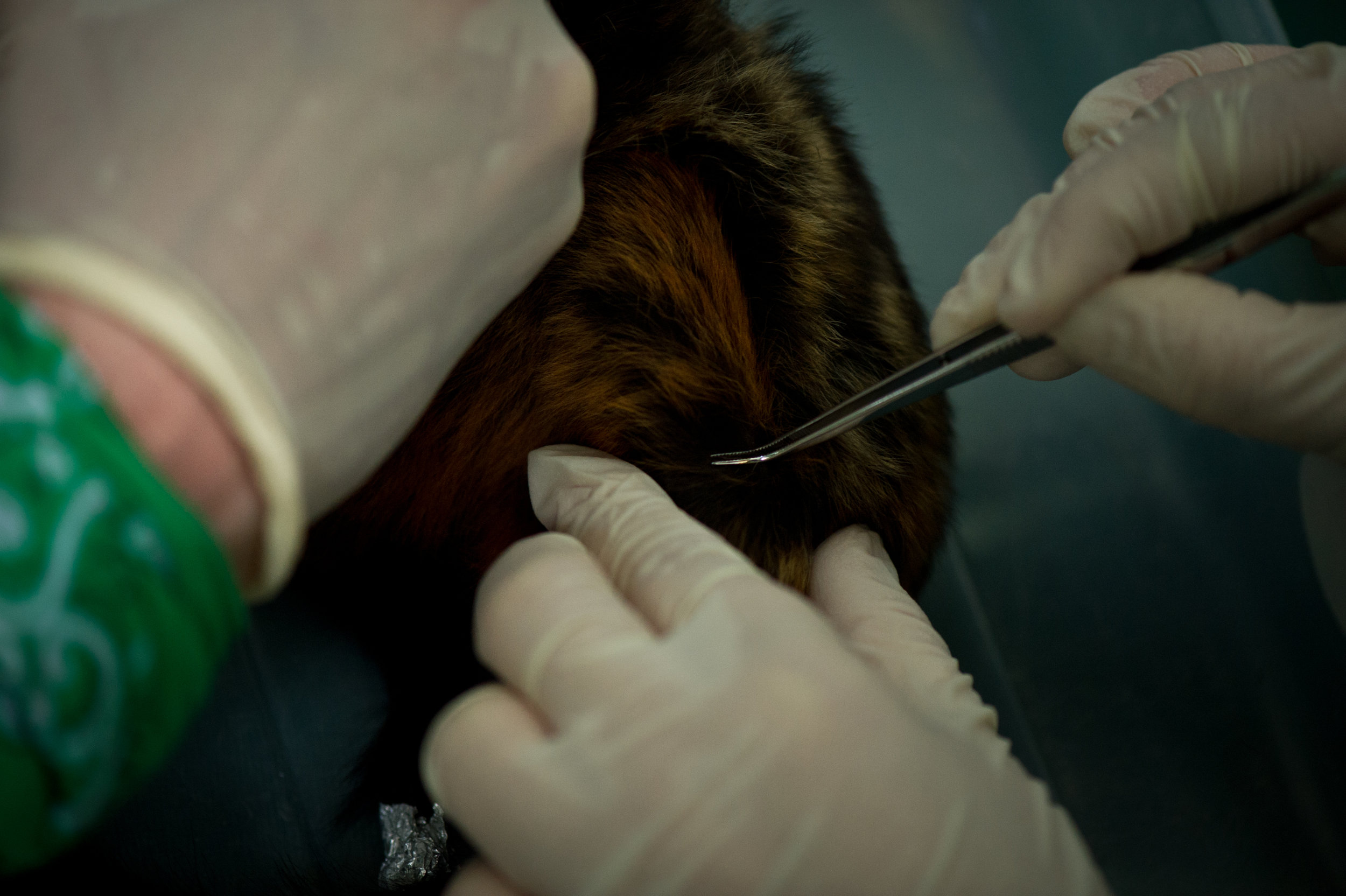
Hair samples are taken for DNA analysis.
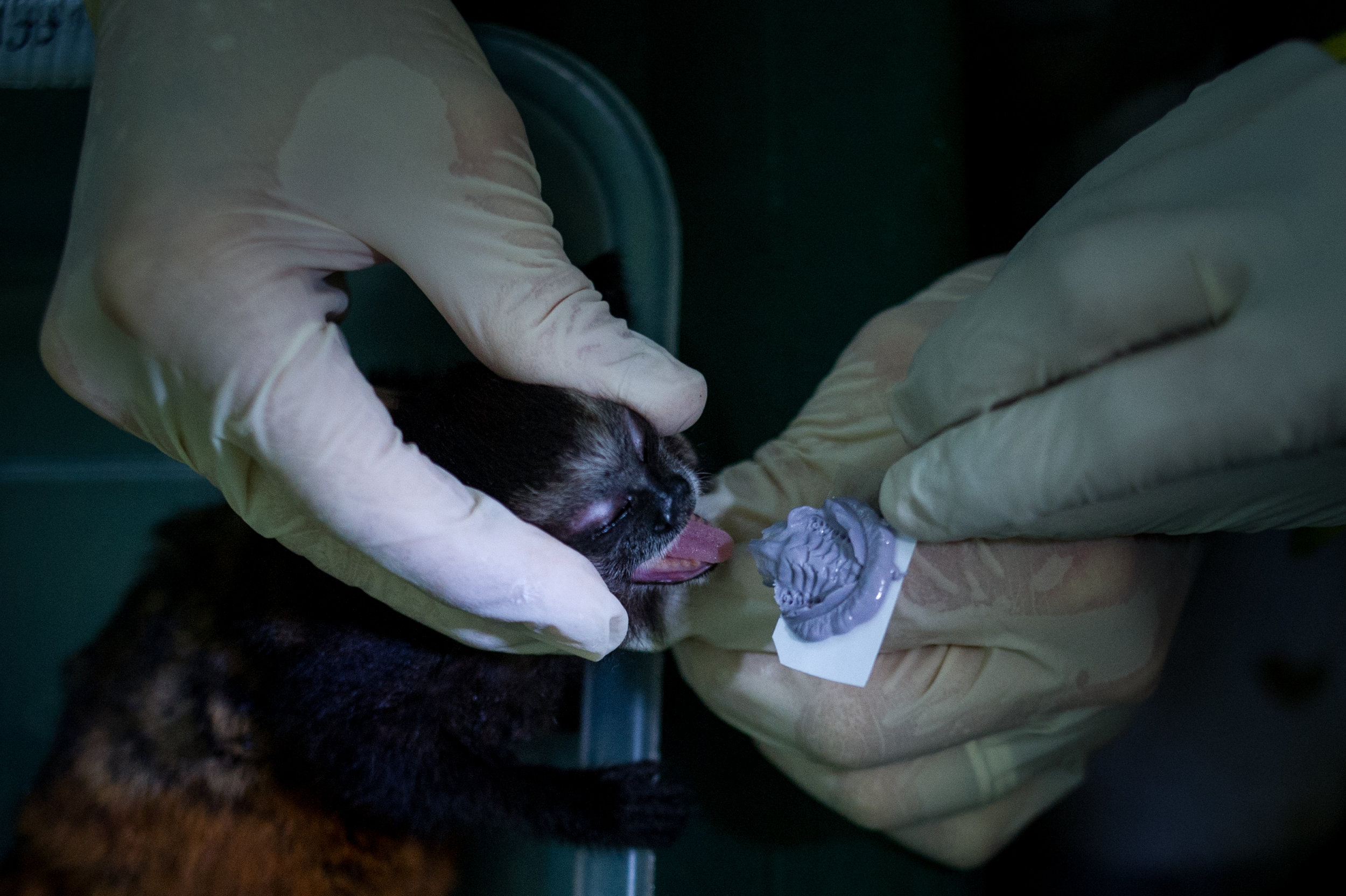
Dental casts provide much information on the age and health of the animals.
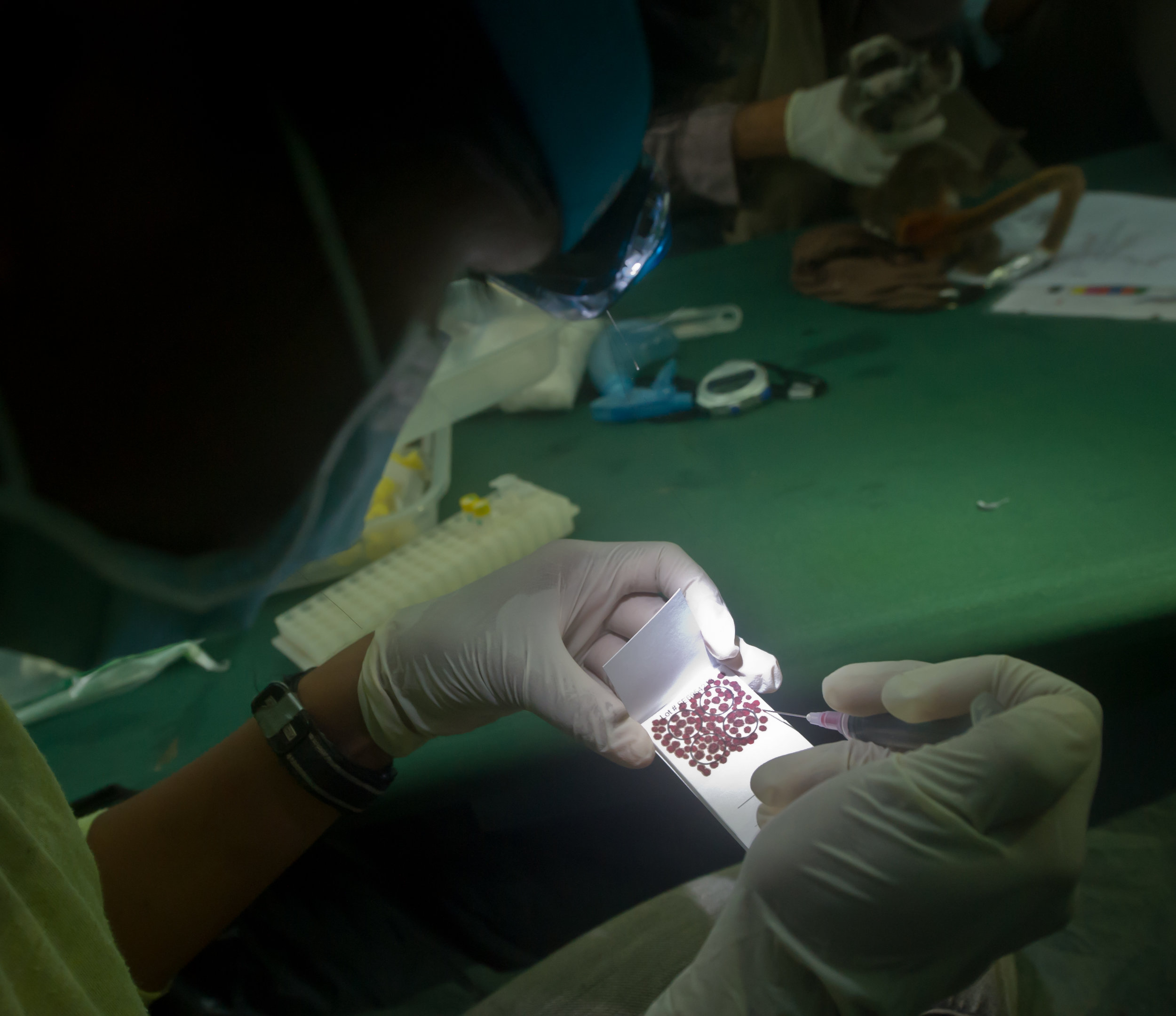
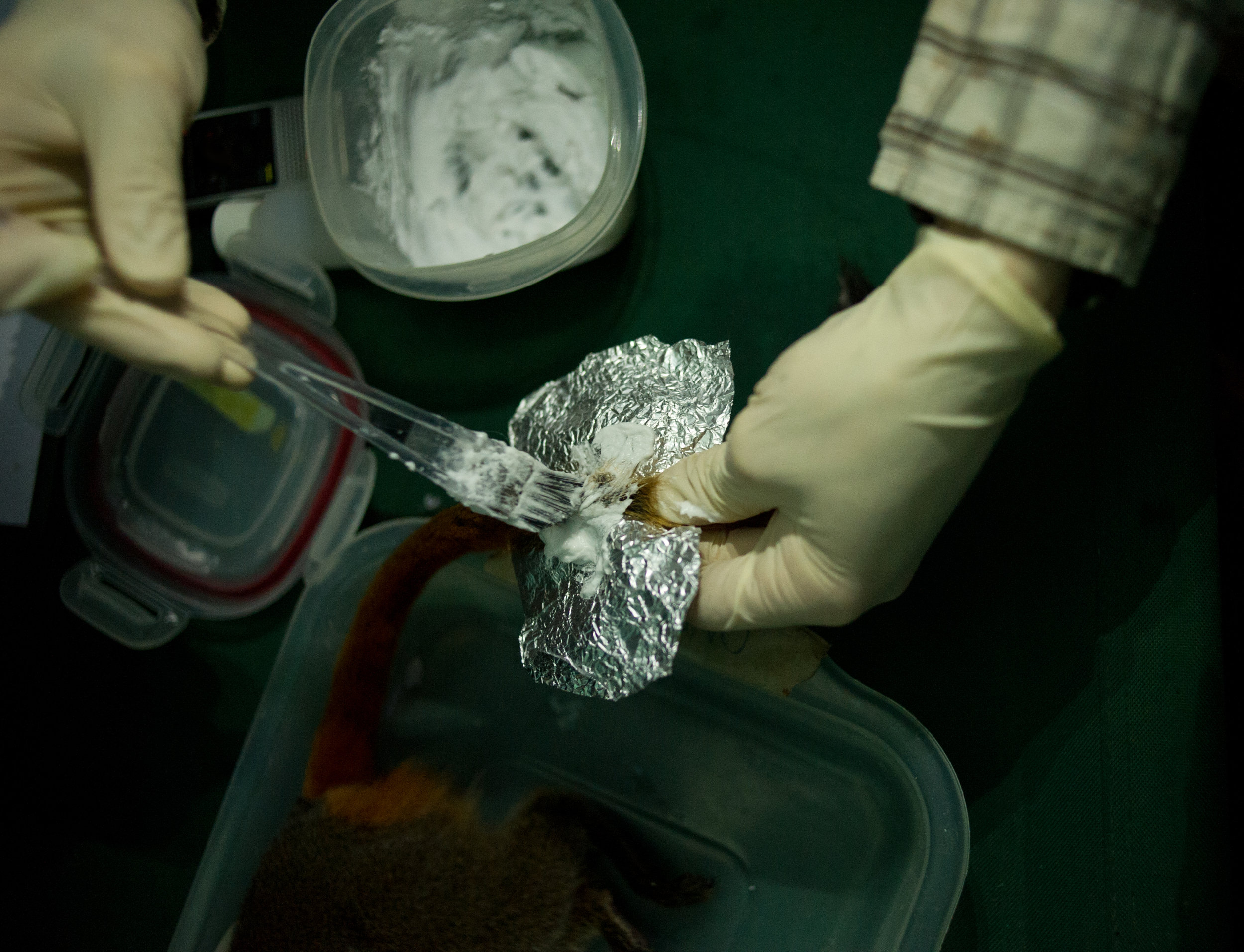
Individuals tails are bleached in specific patterns so that behavioural studies can be conducted on the groups over the next two to three months before their hair moults and new hair is regrown.
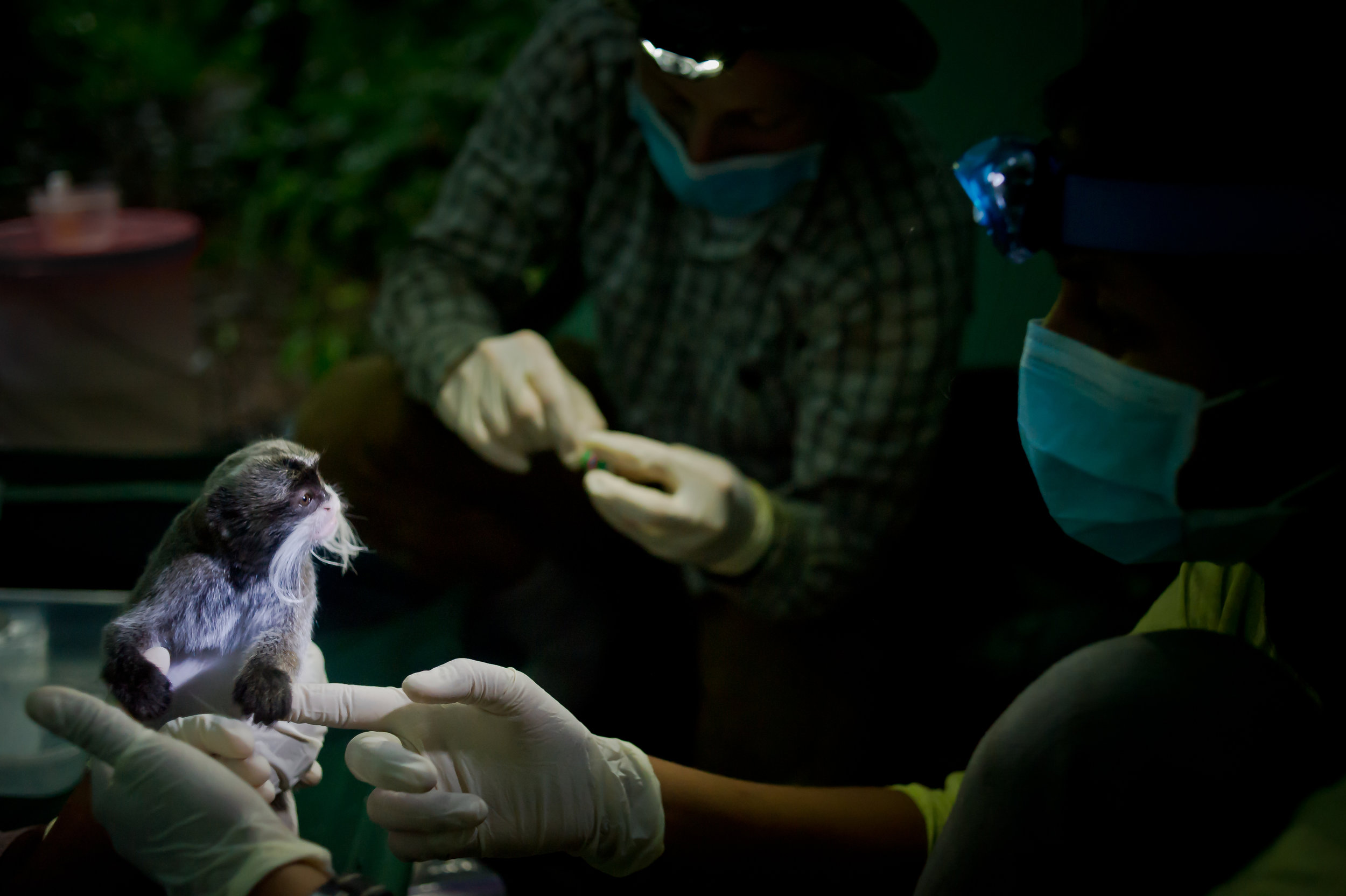
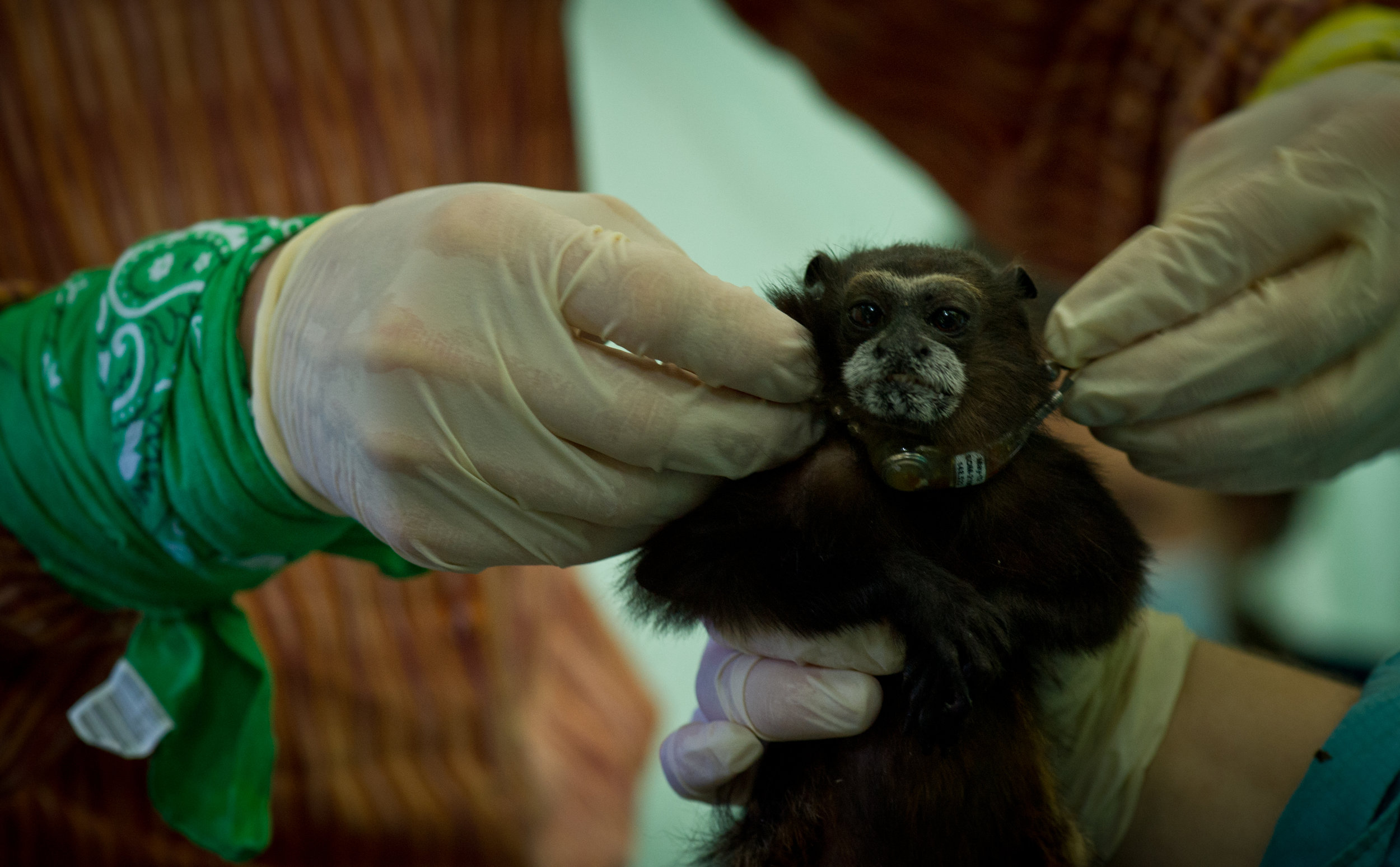
Tamarin groups are matriarchal. To be able to collect behavioural data on them the dominant female is given a radio collar.
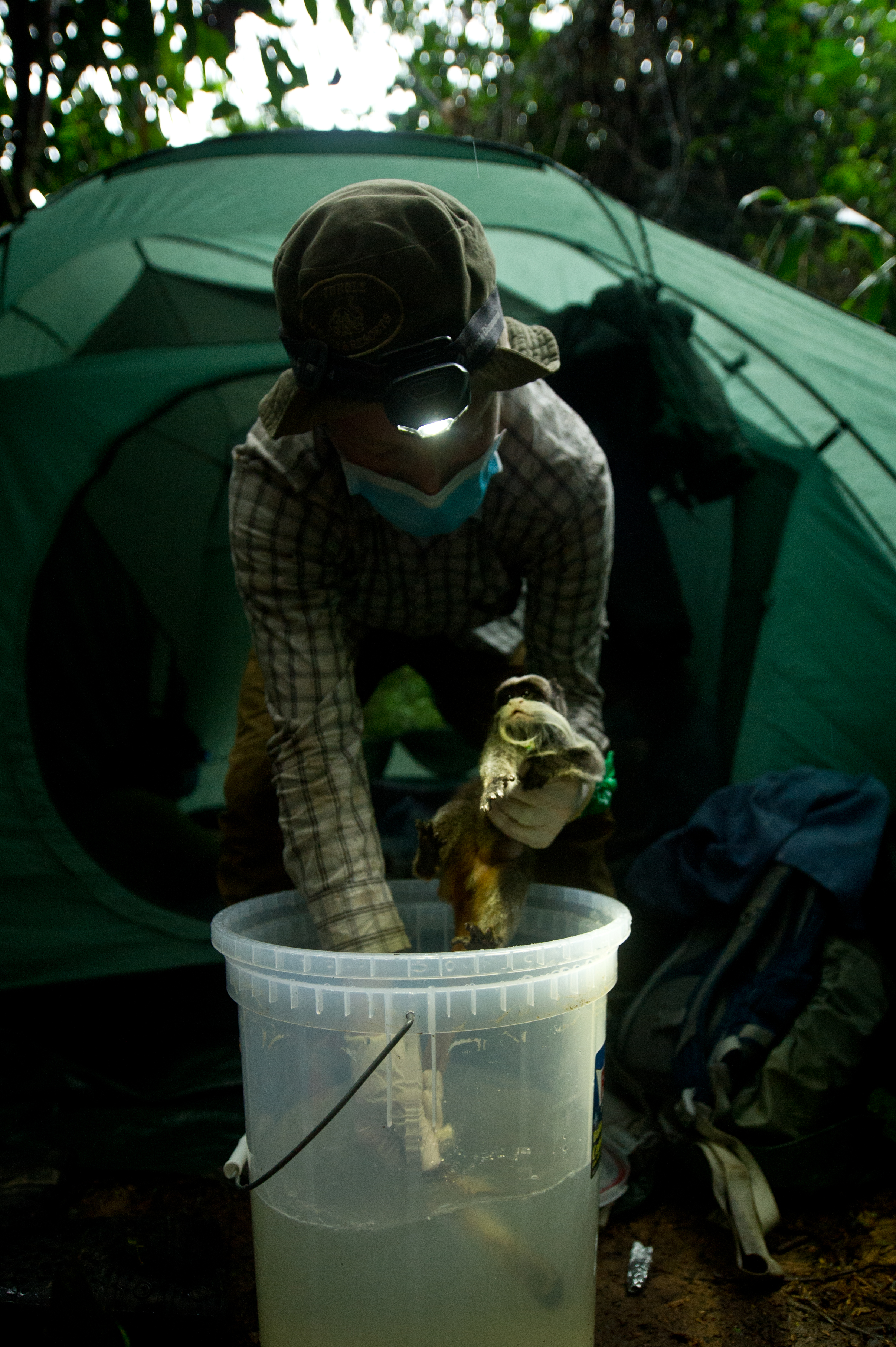
At the end of processing of an animal the bleach is washed off.
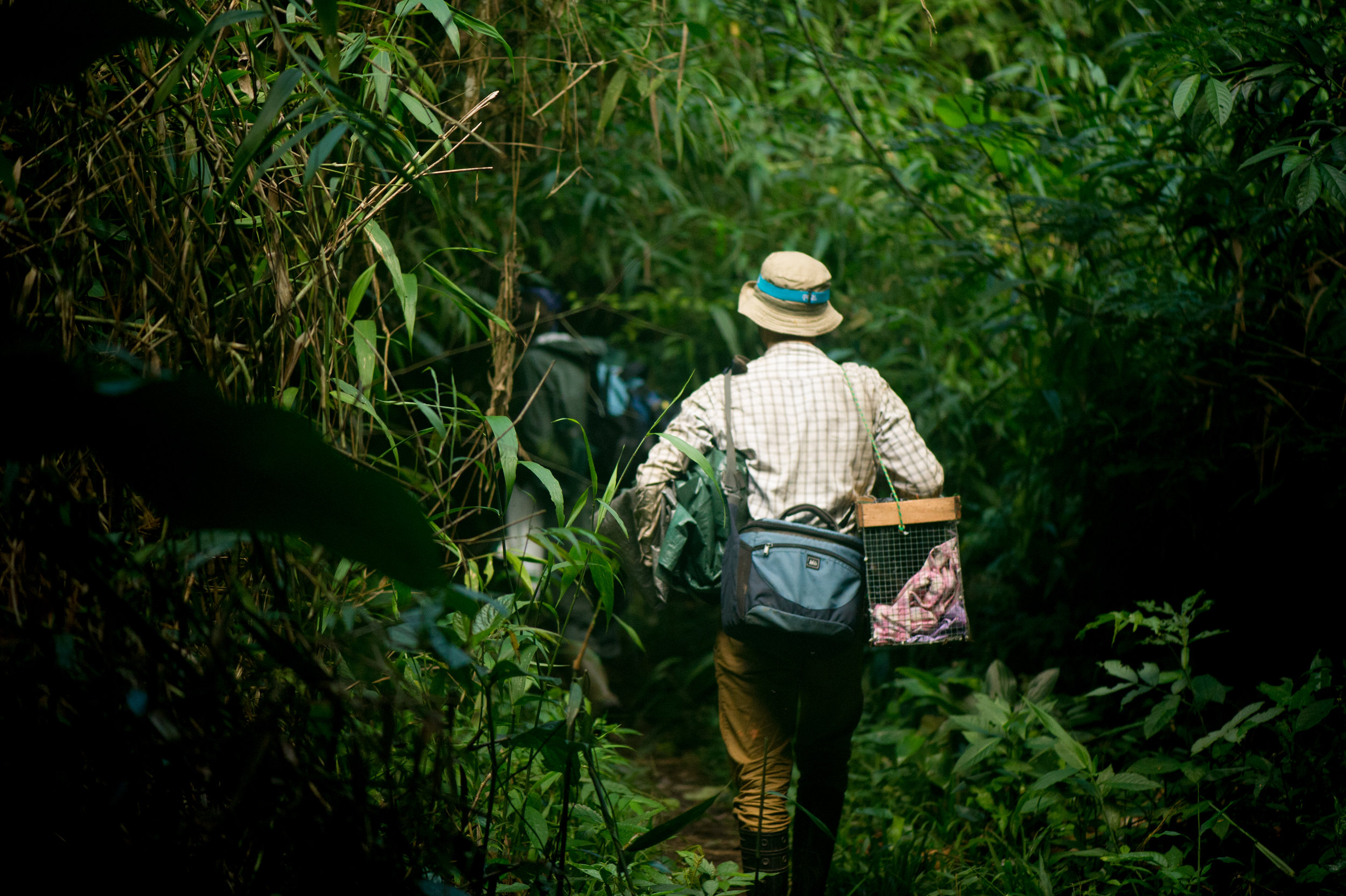
Exhaustion mixed with deep satisfaction and over a hundred samples to process
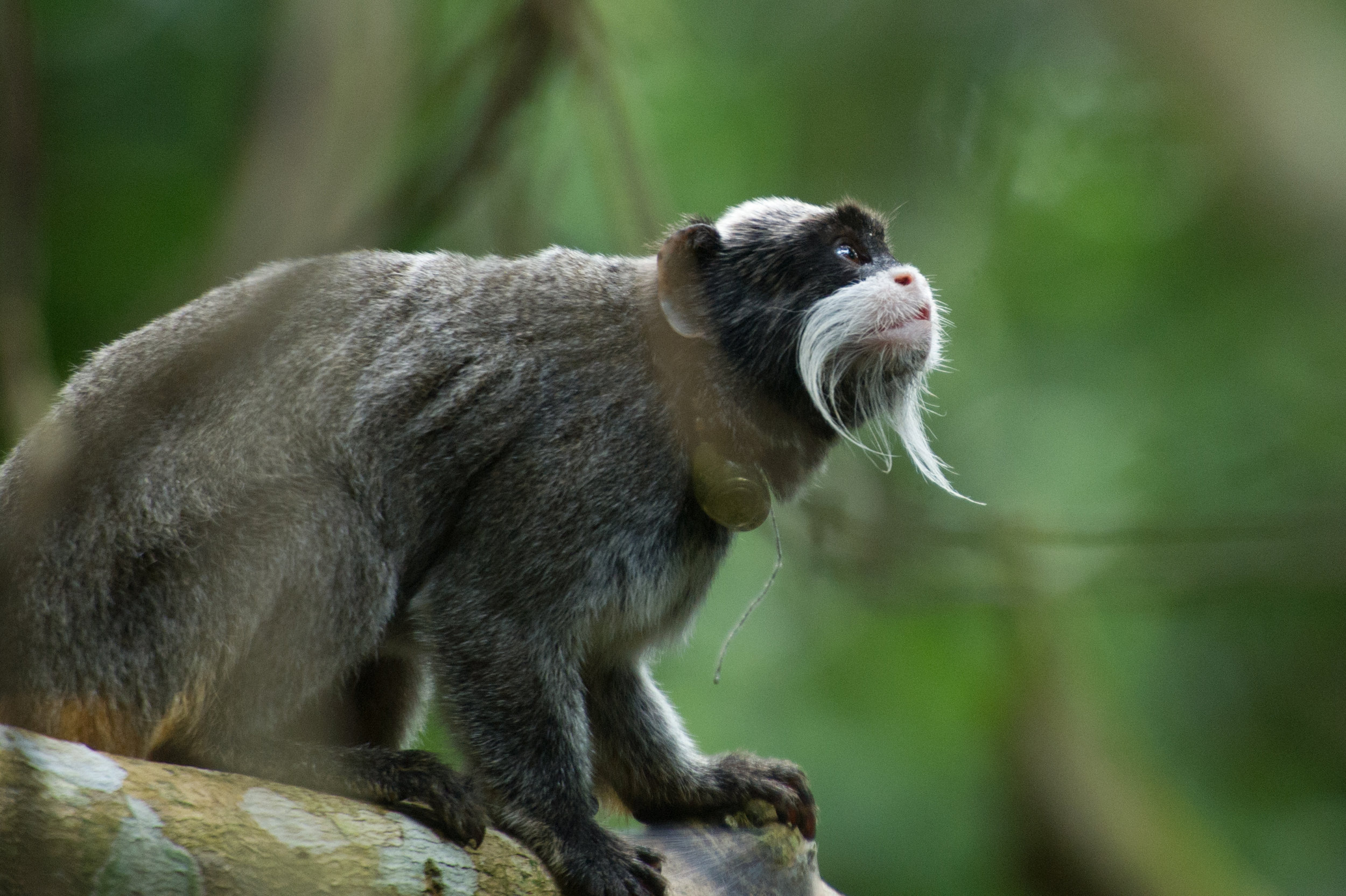























Part one of a five person team sets up the traps. The untimate goal is to capture the entire group so as not to disturb their social organisation. Bait is placed in each compartment of the trap, while each trap door is controlled manually.
Bait is placed in each compartment of the trap, while each trap door is controlled manually.
The second half of the team sets up a processing station in a modified tent. Inside, the instruments required for processing are sterilised and laid out on a foldable cot in a predefined manner.
Patience is the most valueable asset one develoups. It also is a must to be able to wake up from a light slumber in cramped conditions at the slightest russle of leaves or tamarin tweet.
A few soft calls and some light jumps and one has to be ready to pull the strings. Here Efstathia Robakis (center) records tamarin vocalisations. Quietly, and without startling the primates, compartments are closed as the animals enter.
As soon as the group is inside, the trap is brought carefully to the ground. This is done in an effiecient and practised manner to reduce the stress on the animals. Covering the entire trap with a tarp calms the animals down immediately.
Small, controled doses of anaesthesia and the animals are moved to the processing tent where initial assesments are done.
All team members are vaccinated and wear proper protective equipment (gloves, masks, etc) that are changed between animals to prevent any cross contamination. All data is timestamped and recorded on a voice recorder for later verification.
Once all animals are inside the tent, there is not a moment of free time. The bulk of the processing happens here. Photographs are taken to record teeth genitalia and scent glands. A comprehensive injuries check allowed for careful monitoring of health over time.
Every animal that passes through the prcessing tent is giving a microchip. This way individualls can be recognised even after all temporary forms of identification has vanished, apearnce is altered by age, or group membership changed through dispersal.
79 measurements are taken on both sides of the body.
This is done last and only if the animal is compliant (as at this point the anaesthesia is wearing off).
Buccal swab samples are sent to be analysed for disease.
Hair samples are taken for DNA analysis.
Dental casts provide much information on the age and health of the animals.
Individuals tails are bleached in specific patterns so that behavioural studies can be conducted on the groups over the next two to three months before their hair moults and new hair is regrown.
Tamarin groups are matriarchal. To be able to collect behavioural data on them the dominant female is given a radio collar.
At the end of processing of an animal the bleach is washed off.
Exhaustion mixed with deep satisfaction and over a hundred samples to process